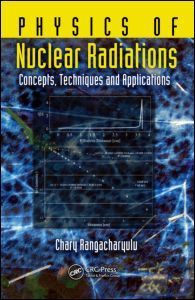Description
Physics of Nuclear Radiations
Concepts, Techniques and Applications
Author: Rangacharyulu Chary
Language: English
Subjects for Physics of Nuclear Radiations:
Keywords
Rest Energy; Resonance Fluorescence; calculate and assess nuclear radiations; Vice Versa; fundamental nuclear radiation physics; MeV Gamma Ray; cloud chambers; multi-wire chambers; semiconductor solid state detectors; Electron Volts; growth and decay of nuclear radiations; Cherenkov Light; behavior of heavy charged particles; electrons; photons; and neutrons; Cherenkov Radiation; stability of nuclei or particles against radioactive transformations; Cherenkov Detectors; physics principles of detectors; Beta Decays; methods for measuring energy and time spectroscopies; Gamma Rays; typical nuclear facilities; Charged Particles; nuclear radiation in agriculture; medicine; industry; and art; Alpha Particles; Energy Deposits; Artificial Transmutation; Lorentz Factor; Binding Energies; Radiation Length; Thermal Neutrons; Tissue Weighting Factors; Fractional Error; Stopping Power; MeV Neutron; HPGe Detector; Separation Energy; 60Co Decays
135.96 €
In Print (Delivery period: 15 days).
Add to cartSupport: Print on demand
Description
/li>Contents
/li>Readership
/li>Biography
/li>
Physics of Nuclear Radiations: Concepts, Techniques and Applications makes the physics of nuclear radiations accessible to students with a basic background in physics and mathematics. The main text avoids calculus, with detailed derivations deferred to endnotes and appendices. The text explains meanings and the significance of equations in detail to be understandable to audiences from various disciplines.
Rather than convince students one way or the other about the hazards of nuclear radiations, the text empowers them with tools to calculate and assess nuclear radiations and their impact. It discusses the meaning behind mathematical formulae as well as the areas in which the equations can be applied.
After reviewing the physics preliminaries, the author addresses the growth and decay of nuclear radiations, the stability of nuclei or particles against radioactive transformations, and the behavior of heavy charged particles, electrons, photons, and neutrons. He then presents the nomenclature and physics reasoning of dosimetry, covers typical nuclear facilities (such as medical x-ray machines and particle accelerators), and describes the physics principles of diverse detectors. The book also discusses methods for measuring energy and time spectroscopies before concluding with applications in agriculture, medicine, industry, and art.
Physics Preliminaries. Radioactivity. Nuclear Energetics. Interaction of Heavy Charged Particles with Matter. Interactions of Photons and Electrons in Matter. Interactions of Neutrons with Matter. Basics of Radiation Dosimetry. Radiation Sources. Nuclear Radiation Detectors. Measurement Techniques. Nuclear Techniques—A Few Applications. Appendices. Index.
These books may interest you

Radiation in Medicine and Biology 117.70 €



